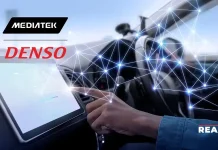OTSL Inc., a short-distance wireless system and embedded system developer and distributor, has announced a new 3D real-time millimeter-wave radar simulator for autonomous driving (1), AMMWR2 (Advanced Millimeter Wave Radar Simulator 2). Since introducing AMMWR to market in 2017 as the world’s first sensor simulator software for autonomous driving that enables dynamic real-time simulation, OTSL has continued to invest aggressively in its development. With the announcement of AMMWR2, OTSL has manifested the leaps in functionality and performance achieved in this development. This product is planned to be marketed worldwide by the end of this year to automotive manufacturers, system supply manufacturers developing, designing and producing vehicle sensors, and semiconductor manufacturers developing sensor devices.
Also Read: Dahua Technology Unveils New Full-color Smart Dual Illuminators Camera Series
“With the global advance in application of autonomous driving, expectations are growing for advanced simulation technology capable of creating a virtual reproduction of all kinds of driving conditions and verifying and validating safety and accuracy. However, the current autonomous driving vehicle has only Level 2 or Level 3 functions under the SAE International standards,” said Shoji Hatano, CEO, OTSL and OTSL Germany GmbH. “In order to achieve fully autonomous driving via system monitoring, Level 5 of the standards, it is essential to include simulation of potential accidents caused by electronic device defect and sensor failures. AMMWR2, announced on June 17, is the only millimeter-wave radar sensor simulator that covers from the electronic device level, including semiconductors and sensors, to the Autonomous Driving (AD) and Advanced Driver Assistance System (ADAS) simulation domain.”
AMMWR2 uses the ray-tracing method (*2) using in the optics simulation field and unique reflection / diffraction models, applying a dedicated three-dimensional computer-generated map from Unreal Engine 4 (EPIC Games, Inc.) implementation of reflection and diffraction models of roads, roadside trees, streetlights, traffic signals, signs, and others to achieve real-time simulation of dynamic objects. Developing original measurement methods and creating reflection models from data obtained by the measurement enables accurate simulation of how radio wave from radar is reflected, considering even the shapes and materials of vehicles, pedestrians, traffic signals, signs, and other objects. By strengthened partnership with COSIDE (R) (*3), a SystemC AMS design and simulation tool from COSEDA Technologies GmbH for semiconductors supporting design from the circuit design to the system design level, an environment can be created in which simulation can be performed entirely in software without the need for any hardware, such as sensors or electronic control units (ECUs), or even the vehicle itself.




